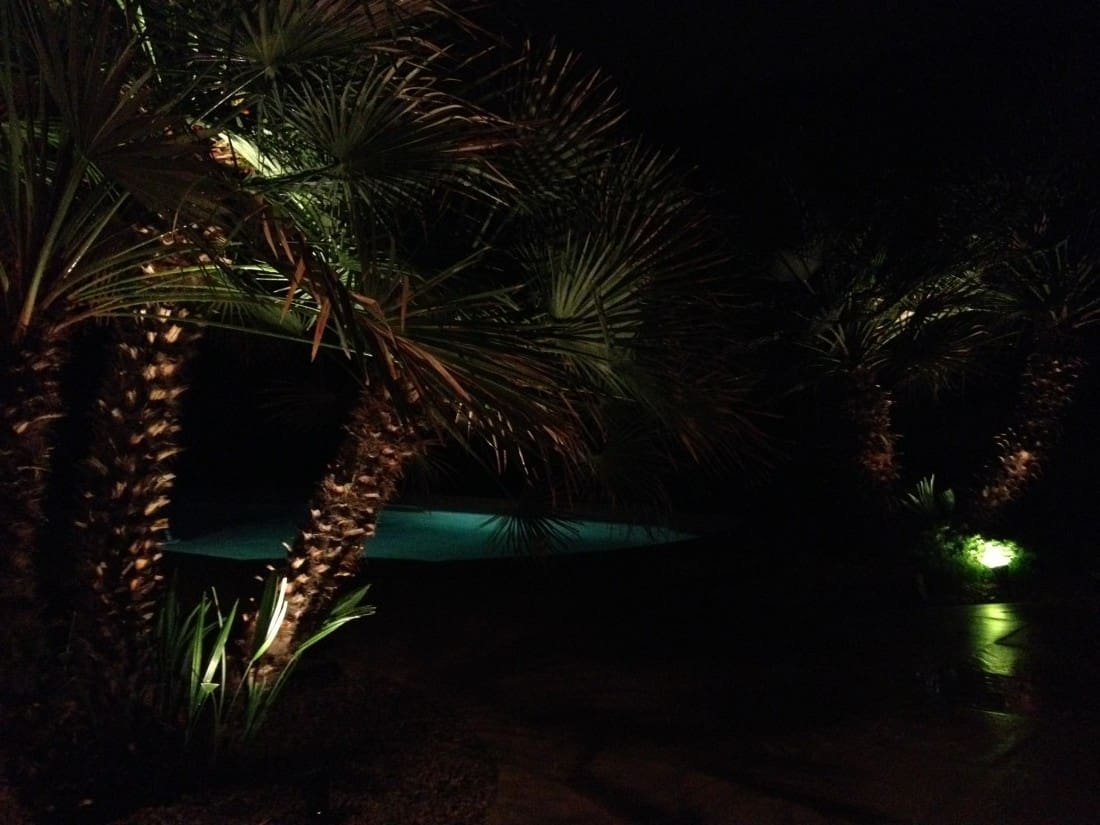Professional landscape lighting adds beauty and value to any property, enhancing both the usability and safety of outdoor areas like patios, gardens and walkways. Here are the top five techniques for enhancing a property with lighting:
1) Look For Inspiration
Spend some time cruising top neighborhoods at night – look for homes and properties that have the styles of illumination you want to achieve. Browse through websites and home decor magazines for ideas and create a portfolio of styles and designs that match the looks you want for your outdoor lighting installations.
2) Plan Your Project
Make a sketch of each yard to plan the areas you’d like to illuminate, or better yet, take photos of the outdoor areas at night. Are there specific features, such as certain trees, pathways or architectural elements, that you’d like to highlight? Where are the power sources located? Experiment using a few flashlights to shine the light on locations and objects where you’d like to install fixtures – this will help you narrow down which features you should highlight and the style and location of the lights.
With planning, you can develop an accurate budget that covers the number and types of lights needed along with supplies like wiring and electrical junction boxes. Planning ahead will also help you identify if you need to hire an electrician to install additional power outlets.
3) Define The Purpose
Determine why your clients want additional illumination. Are they looking to create a romantic backyard retreat, or do they want to enhance nighttime security on their property by illuminating otherwise poorly-lit areas? Spotlights and up-lights placed near windows and doors help to deter would-be intruders, while low-level pathway lights and ground-level lights, such as lights that are recessed into stair risers and built into stepping stones, help to create a warm, intimate mood and decrease the risk of trips and falls in dimly-lit areas. Professional landscapers and designers use a combination of different lighting styles and locations to develop a lighting installation that both enhances nighttime security and creates an inviting outdoor living space.
4) Avoid Eye-Level Lighting
As a general rule, landscape lights should either be placed near to the ground (either flush or no higher than about knee-level) or installed on a building or tree. Never place lights at eye level (between 2 feet and 8 feet) as this can make the lighting feel harsh and cause temporary night blindness as well as dangerous, unsightly shadows (increasing the risk of tripping). The goal of outdoor lighting is to emphasize the light effect, not the light source (unless the actual light fixture is part of the decor, such as lantern or pathway lights).
5) Vary Your Light Levels
To achieve the professional look for each landscape lighting project, use a variety of different light intensities – focal points like large trees should be brightly lit, while walkways and steps look best when illuminated with a soft, gentle light. When installing your lights, be sure to arrange your wiring so that your outdoor lighting levels can be easily adjusted to match your nighttime lighting needs.




